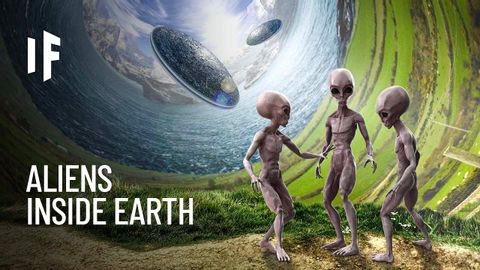
Subtitles & vocabulary
What If Aliens are Living Inside Earth?
00
神谷菜々子 posted on 2022/03/10Save
Video vocabulary
sophisticated
US /səˈfɪstɪˌketɪd/
・
UK /səˈfɪstɪkeɪtɪd/
- Adjective
- Making a good sounding but misleading argument
- Wise in the way of the world; having refined taste
- Transitive Verb
- To make someone more worldly and experienced
B1TOEIC
More material
US /məˈtɪriəl/
・
UK /məˈtɪəriəl/
- Noun (Countable/Uncountable)
- Cloth; fabric
- Supplies or data needed to do a certain thing
- Adjective
- Relevant; (of evidence) important or significant
- Belonging to the world of physical things
A2
More evidence
US /ˈɛvɪdəns/
・
UK /'evɪdəns/
- Uncountable Noun
- Factual proof that helps to establish the truth
- Information presented in court to prove or disprove alleged facts.
- Transitive Verb
- To indicate clearly; to be evidence of.
- To show clearly; prove.
A1TOEIC
More spectacular
US /spɛkˈtækjəlɚ/
・
UK /spekˈtækjələ(r)/
- Adjective
- Impressive or out of the ordinary
- Noun
- A lavish or elaborate display or performance.
B1
More Use Energy
Unlock All Vocabulary
Unlock pronunciation, explanations, and filters
